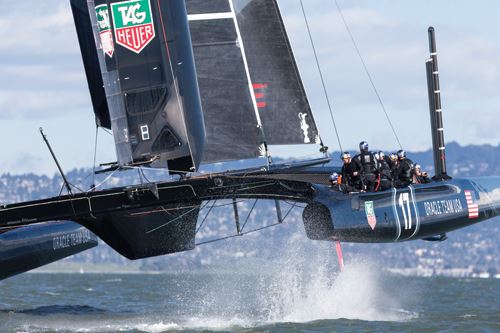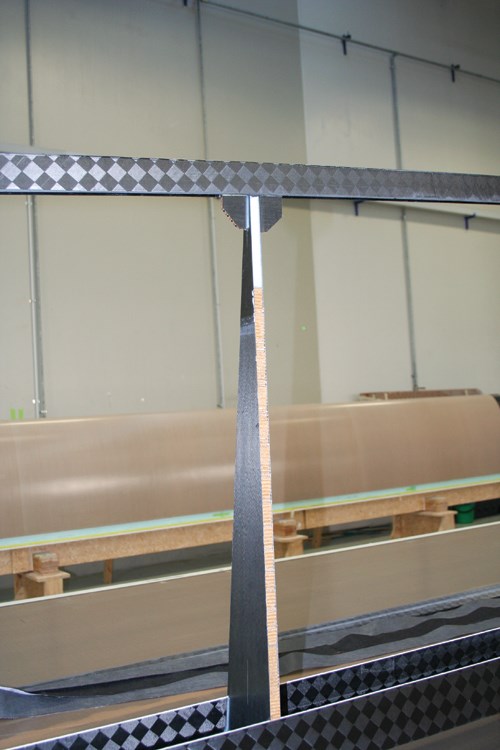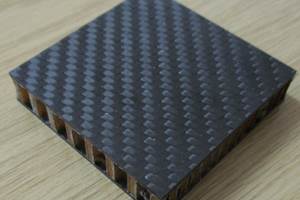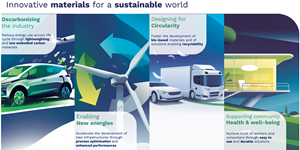Spread-tow carbon fabrics reduce mass in America’s Cup catamaran
To meet its weight and cost goals for this year's America's Cup, cup defenders ORACLE TEAM USA turned to Oxeon AB’s (Borås, Sweden) trademarked TeXtreme Spread Tow carbon reinforcements.
Share
The America’s Cup race has always been a showpiece of lightweight composite solutions, but in this year’s 34th campaign, the financial climate has made cost-effective solutions a must. To meet both weight and cost goals, cup defenders ORACLE TEAM USA, owned by Larry Ellison, CEO of Oracle, turned to Oxeon (Borås, Sweden) trademarked TeXtreme Spread Tow carbon reinforcements, in both dry and prepregged forms. The result was a substantial weight savings on the team’s AC72 racing catamaran.
Dirk Kramers, head of structures at ORACLE TEAM USA, reports that the team wanted to qualify new materials at the start of the design process to save weight yet still achieve the structural performance required for the new high-performance catamaran class. Core Builders Composites (Auckland, New Zealand), the boatbuilder, evaluated TeXtreme for its mechanical strength and stiffness and its manufacturing practicality.
Tim Smyth, general manager at Core Builders Composites, says the material brought several benefits to both. Conventional prepregs and woven fabrics with areal weights of less than 100 g/m2 are typically much more expensive than heavier reinforcements, because they are made with 1K carbon tow. TeXtreme is made with more economical, heavier tow but is spread thinly to facilitate weaving of fabrics with similarly low weight. Further, Smyth reports that all of the laminates in the ORACLE TEAM USA AC72 employ reinforcements in at least two directions, so an 80 g/m2 TeXtreme woven cloth reduced the weight by 20 percent, compared to two layers of 50 g/m2 unidirectional carbon/epoxy prepreg tape, and it brought additional toughness properties due to the interleaved spread fiber tows. Layup time was saved, because it was possible to lay half the number of plies compared to tape, and the woven TeXtreme could be placed on the bias easily, eliminating the tedious hours of hand-cutting tapes for +45° and -45° placement. TeXtreme also offered a cosmetic surface finish on the laminates, which was important because many surfaces on the boat were unpainted to save weight.
One big benefit, explains Smyth, is that some woven materials have only a narrow selvedge to hold them together, which means that when they are cut, they must be handled gently to prevent them from coming apart. Oxeon, however, uses a binder that holds its dry fabric together for infusion layups. “We had a wide range of areal weights and fiber styles to choose from,” adds Smyth.
TeXtreme 100 g/m2 cloth was used to fabricate the wing elements and fairings, and TeXtreme 80 g/m2 cloth was used in the lightest of the fairings, typically as the faceskins in a foam-cored sandwich.
Says Kramers, “We were pleased with TeXtreme as it turned out to offer both weight savings and performance we were looking for and it was process-efficient. The flexibility in the material range also helped us find the optimized reinforcement for each application.”
One major component in which TeXtreme was used was the rigid sail mast. The forward parts of the wingsail’s rear element, or flap noses, are sandwich constructions primarily in torsion and are critical to both stiffness and strength. Their skin laminate angles are optimized to provide the correct torsional stiffness profile along the length of the aerodynamic foil. Because the flaps are exposed, durability also had to be considered. The trailing edge (aft) portion of the sail element was designed to be as light as possible. A very thin sandwich laminate of TeXtreme and lightweight foam core delivered aerodynamic performance, with just enough rigidity to maintain its aerodynamic shape.
The skin laminates were precured, then the inside skin was draped over a male former and sealed against moisture ingress. Honeycomb core was prebonded to the outside skin, then mated to the inside skin, thanks to the flexibility of the TeXtreme laminates. The combined layup was cured at ambient temperature under vacuum, saving the time and energy that would have been expended during autoclave cure, while still delivering mold outer finish. The use of TeXtreme, and the smaller amount of adhesive required to bond the core to the faceskins, resulted in a 5 kg/11 lb weight savings over the ~50m2/~538.2 ft2 area of the flap nose, concludes Smyth.
Related Content
PRF Composite Materials introduces primer, adhesive films
Novel RFA570 eXpress cure adhesive film and RF Primer are compatible with PRF’s full range of epoxy prepregs formulations.
Read MoreBiDebA project supports bio-based adhesives development for composites
Five European project partners are to engineer novel bio-based adhesives, derived from renewable resources, to facilitate composites debonding, circularity in transportation markets.
Read MoreComposite resins price change report
CW’s running summary of resin price change announcements from major material suppliers that serve the composites manufacturing industry.
Read MoreResins, additives, adhesives and 3D printing solutions
CAMX 2023: Arkema’s broad portfolio of products for composites fabricators aim to enhance performance, durability and sustainability.
Read MoreRead Next
Plant tour: Daher Shap’in TechCenter and composites production plant, Saint-Aignan-de-Grandlieu, France
Co-located R&D and production advance OOA thermosets, thermoplastics, welding, recycling and digital technologies for faster processing and certification of lighter, more sustainable composites.
Read MoreAll-recycled, needle-punched nonwoven CFRP slashes carbon footprint of Formula 2 seat
Dallara and Tenowo collaborate to produce a race-ready Formula 2 seat using recycled carbon fiber, reducing CO2 emissions by 97.5% compared to virgin materials.
Read MoreVIDEO: High-volume processing for fiberglass components
Cannon Ergos, a company specializing in high-ton presses and equipment for composites fabrication and plastics processing, displayed automotive and industrial components at CAMX 2024.
Read More
























